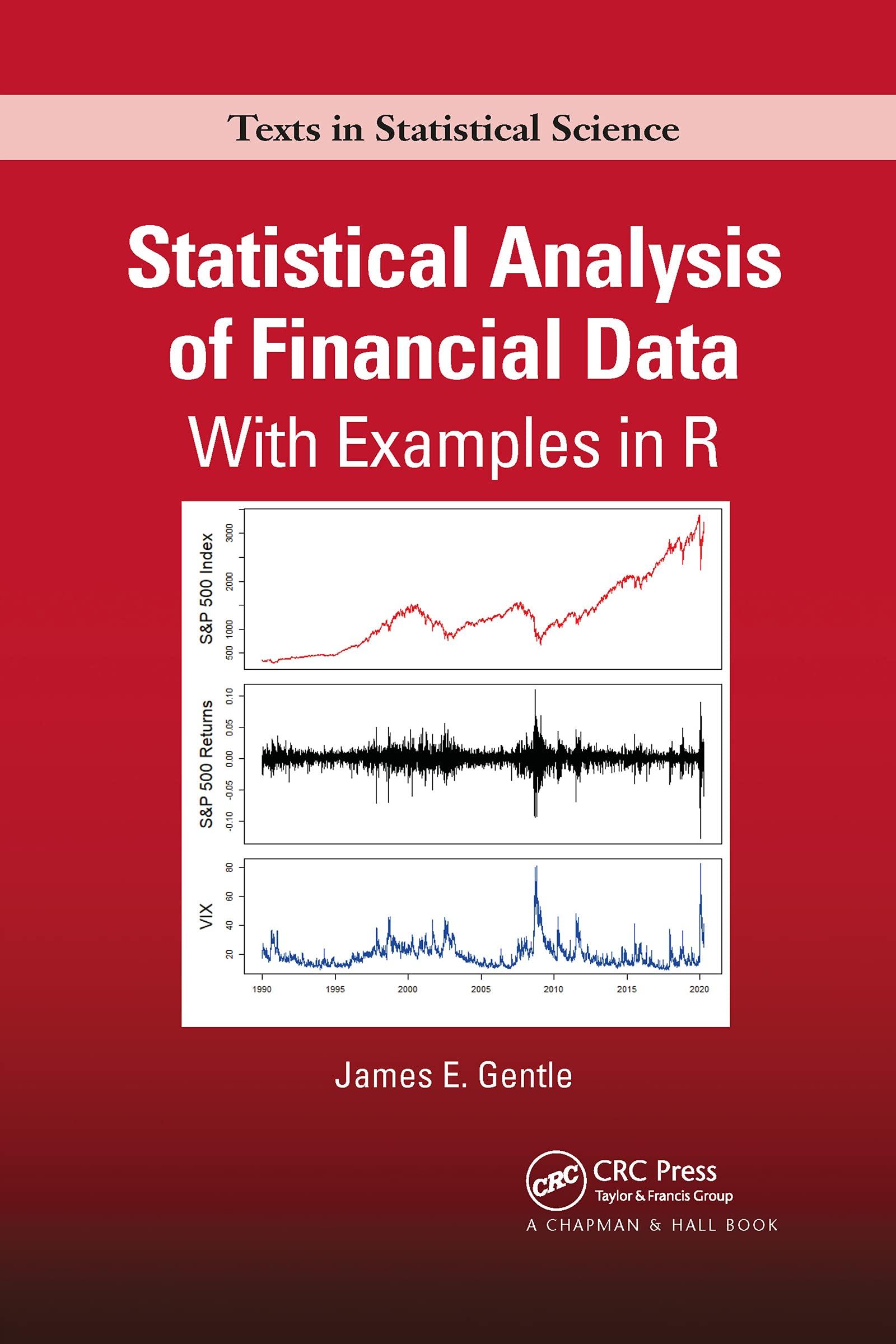We form a portfolio consisting of two stocks, XYZ, and (mathrm{ABC}) whose daily log returns of the
Question:
We form a portfolio consisting of two stocks, XYZ, and \(\mathrm{ABC}\) whose daily log returns of the stock \(\mathrm{ABC}\) have a location-scale \(t\) distribution with mean 0 , scale 0.005 , and degrees of freedom 3 .
Assume that the returns are sequentially independent, and suppose further that the returns of XYZ and ABC tend to be positively related.
We use a copula to model the bivariate distribution of the returns. To model the relationship of the returns of XYZ and ABC, we begin with random variables \(X_{1}\) and \(X_{2}\) that have a bivariate normal distribution with mean 0 , variance 1 , and correlation 0.75 , and let the 2 -vector of returns be
\[ R=\left(F_{1}^{-1}\left(\Phi\left(X_{1}\right)\right), F_{2}^{-1}\left(\Phi\left(X_{2}\right)\right)\right) \]
as in equation (3.114), where \(\Phi\) is the CDF of a univariate \(\mathrm{N}(0,1)\) distribution, and \(F_{1}\) and \(F_{2}\) are the CDFs of the location-scale \(t\) distributions that model the individual returns of XYZ and ABC.
\(Y=\left(F_1^{\leftarrow}\left(\Phi\left(X_1 / \sqrt{\sigma_{11}}\right)\right), \ldots, F_d^{\leftarrow}\left(\Phi\left(X_d / \sqrt{\sigma_{d d}}\right)\right)\right) \tag{3.114}\)
Consider a portfolio consisting of portions \(p_{1}\) of XYZ and \(p_{2}\) of \(\mathrm{ABC}\), where \(p_{1}+p_{2}=1\).
(a) Let \(p_{1}=0.5\) and generate 1,000 random sequences of 253 daily prices of the portfolio where the starting with the prices of both \(\mathrm{XYZ}\) and \(\mathrm{ABC}\) are \(\$ 100\).
Compute the sample standard deviation of the prices of the portfolio at the end of that period.
(b) Now let \(p_{1}=0.9\) and generate 1,000 random sequences of 253 daily prices of the portfolio, again starting with the price of each at \(\$ 100\).
Compute the sample standard deviation of the prices of the portfolio at the end of that period.
Comment on the results.
Step by Step Answer:






